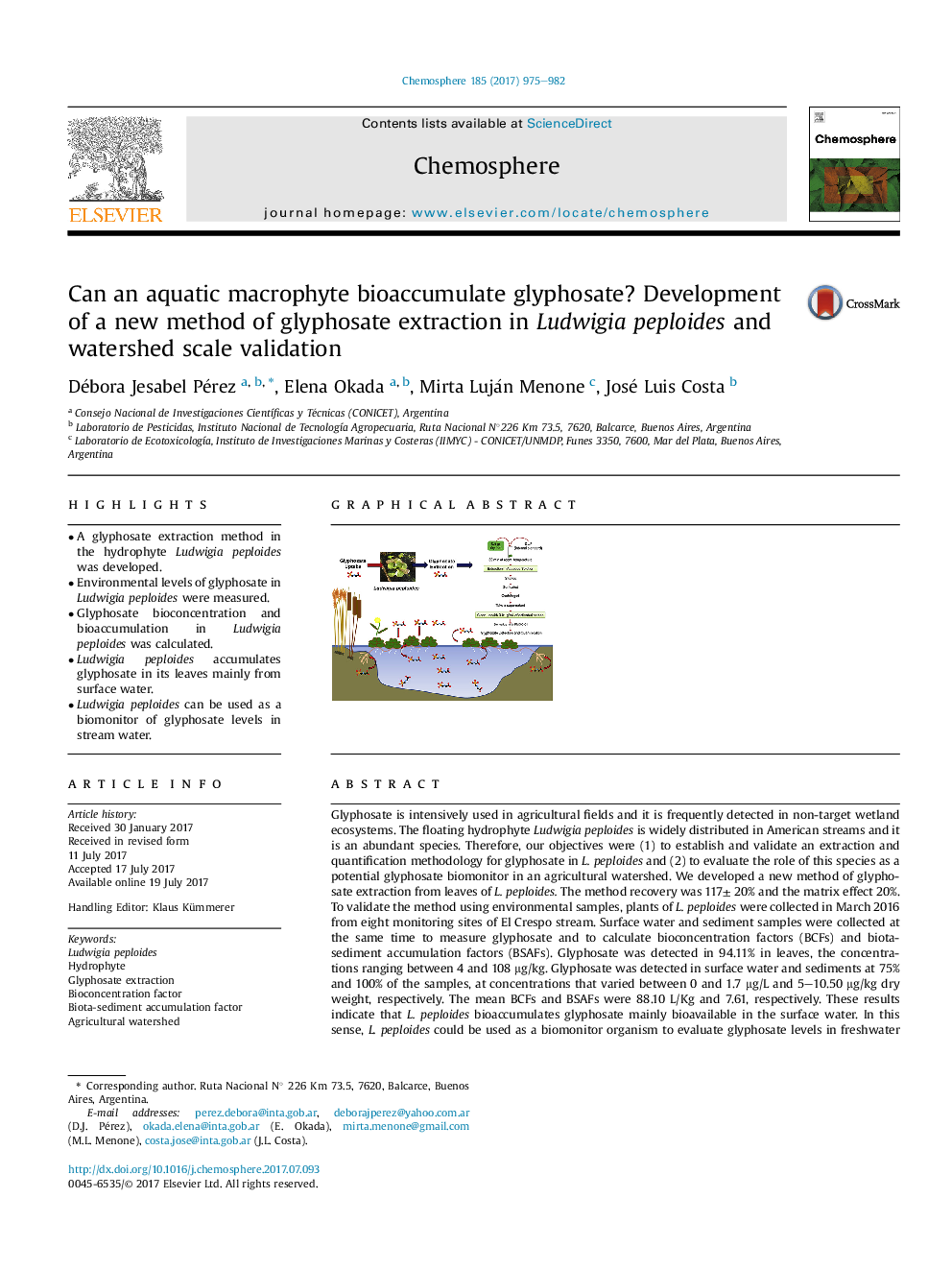| Article ID | Journal | Published Year | Pages | File Type |
|---|---|---|---|---|
| 5746720 | Chemosphere | 2017 | 8 Pages |
â¢A glyphosate extraction method in the hydrophyte Ludwigia peploides was developed.â¢Environmental levels of glyphosate in Ludwigia peploides were measured.â¢Glyphosate bioconcentration and bioaccumulation in Ludwigia peploides was calculated.â¢Ludwigia peploides accumulates glyphosate in its leaves mainly from surface water.â¢Ludwigia peploides can be used as a biomonitor of glyphosate levels in stream water.
Glyphosate is intensively used in agricultural fields and it is frequently detected in non-target wetland ecosystems. The floating hydrophyte Ludwigia peploides is widely distributed in American streams and it is an abundant species. Therefore, our objectives were (1) to establish and validate an extraction and quantification methodology for glyphosate in L. peploides and (2) to evaluate the role of this species as a potential glyphosate biomonitor in an agricultural watershed. We developed a new method of glyphosate extraction from leaves of L. peploides. The method recovery was 117± 20% and the matrix effect 20%. To validate the method using environmental samples, plants of L. peploides were collected in March 2016 from eight monitoring sites of El Crespo stream. Surface water and sediment samples were collected at the same time to measure glyphosate and to calculate bioconcentration factors (BCFs) and biota-sediment accumulation factors (BSAFs). Glyphosate was detected in 94.11% in leaves, the concentrations ranging between 4 and 108 μg/kg. Glyphosate was detected in surface water and sediments at 75% and 100% of the samples, at concentrations that varied between 0 and 1.7 μg/L and 5-10.50 μg/kg dry weight, respectively. The mean BCFs and BSAFs were 88.10 L/Kg and 7.61, respectively. These results indicate that L. peploides bioaccumulates glyphosate mainly bioavailable in the surface water. In this sense, L. peploides could be used as a biomonitor organism to evaluate glyphosate levels in freshwater aquatic ecosystems because, in addition to its capacity to bioconcentrate glyphosate, it is easy to sample and it has a restricted mobility.
Graphical abstractDownload high-res image (240KB)Download full-size image
